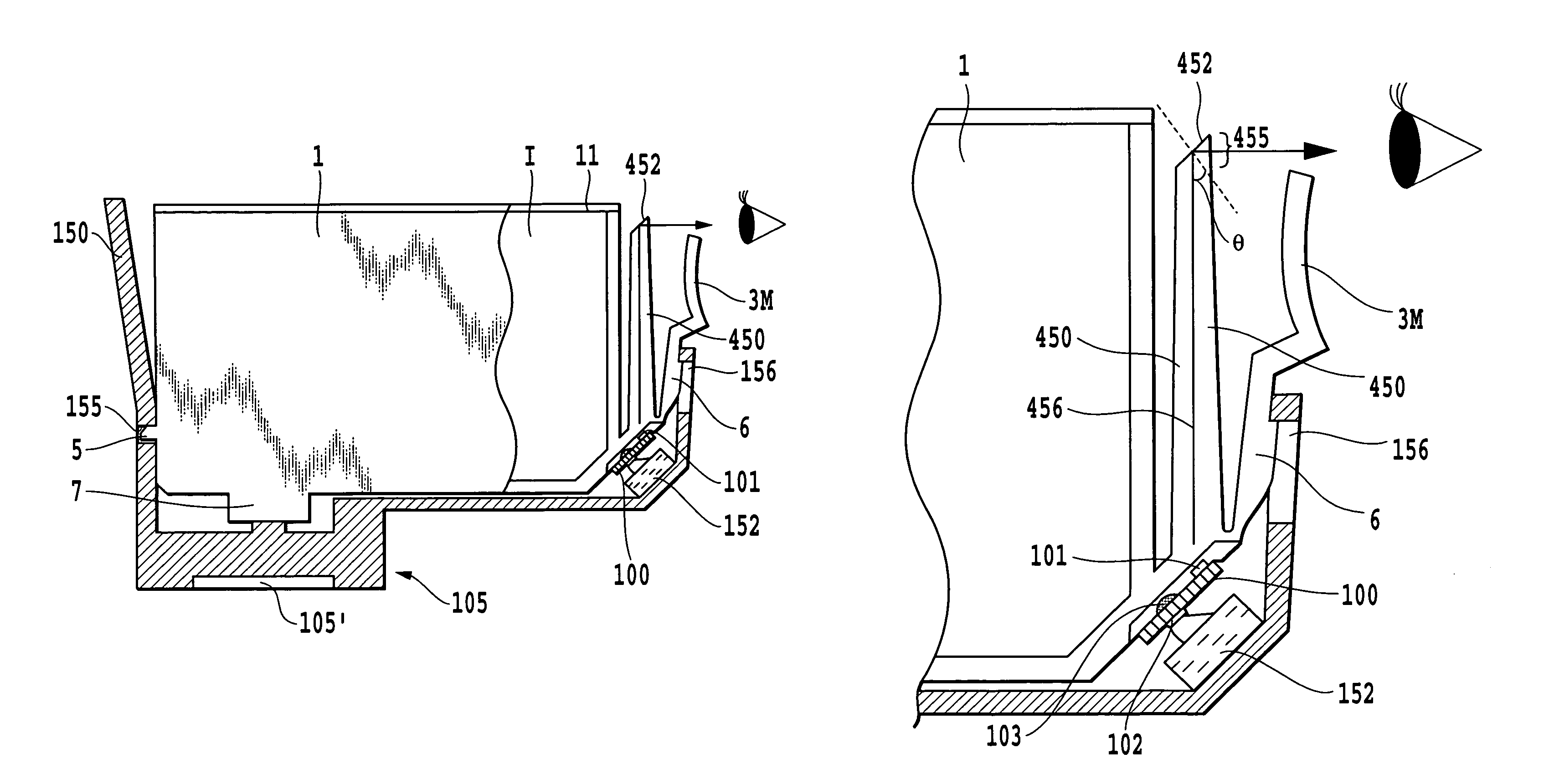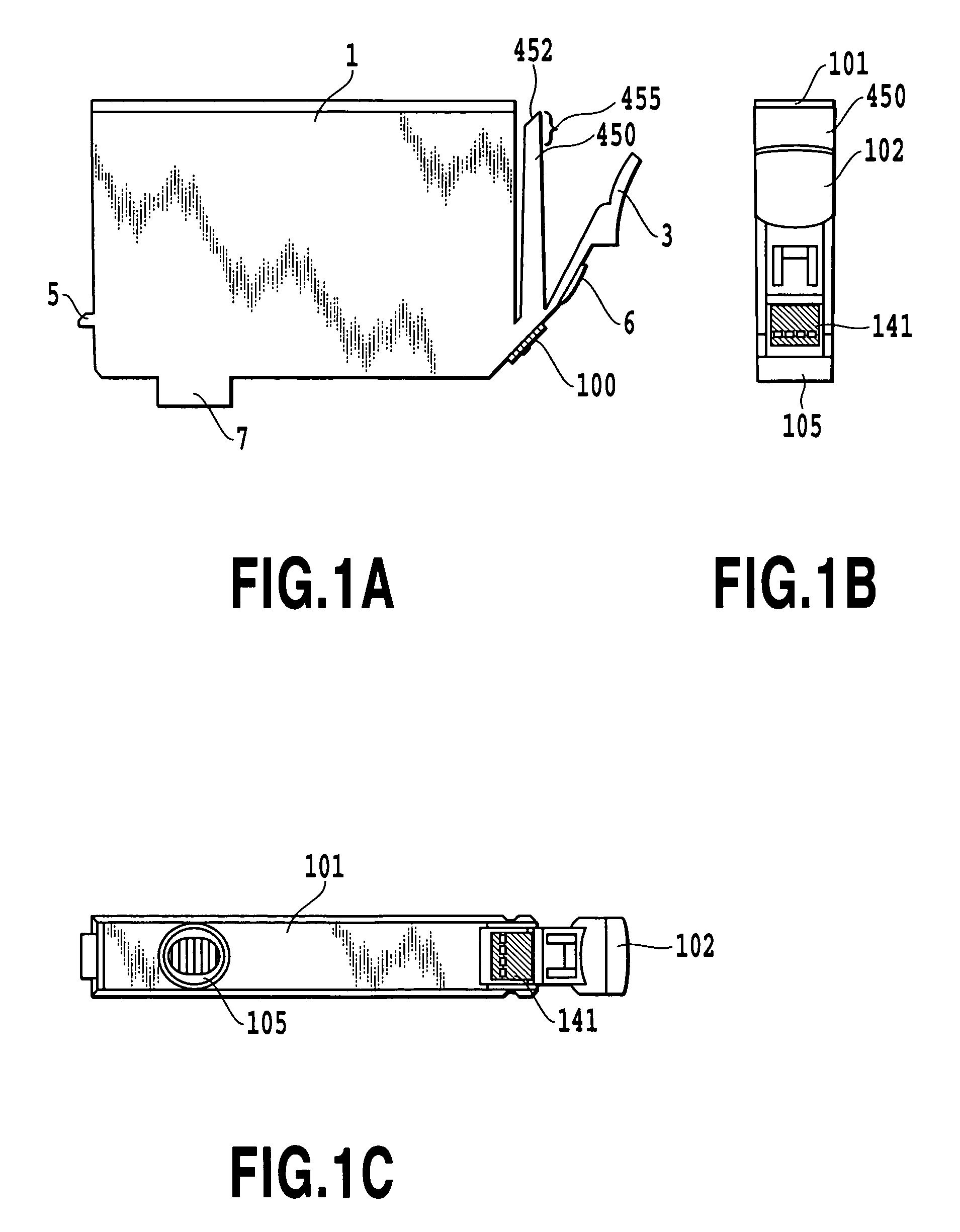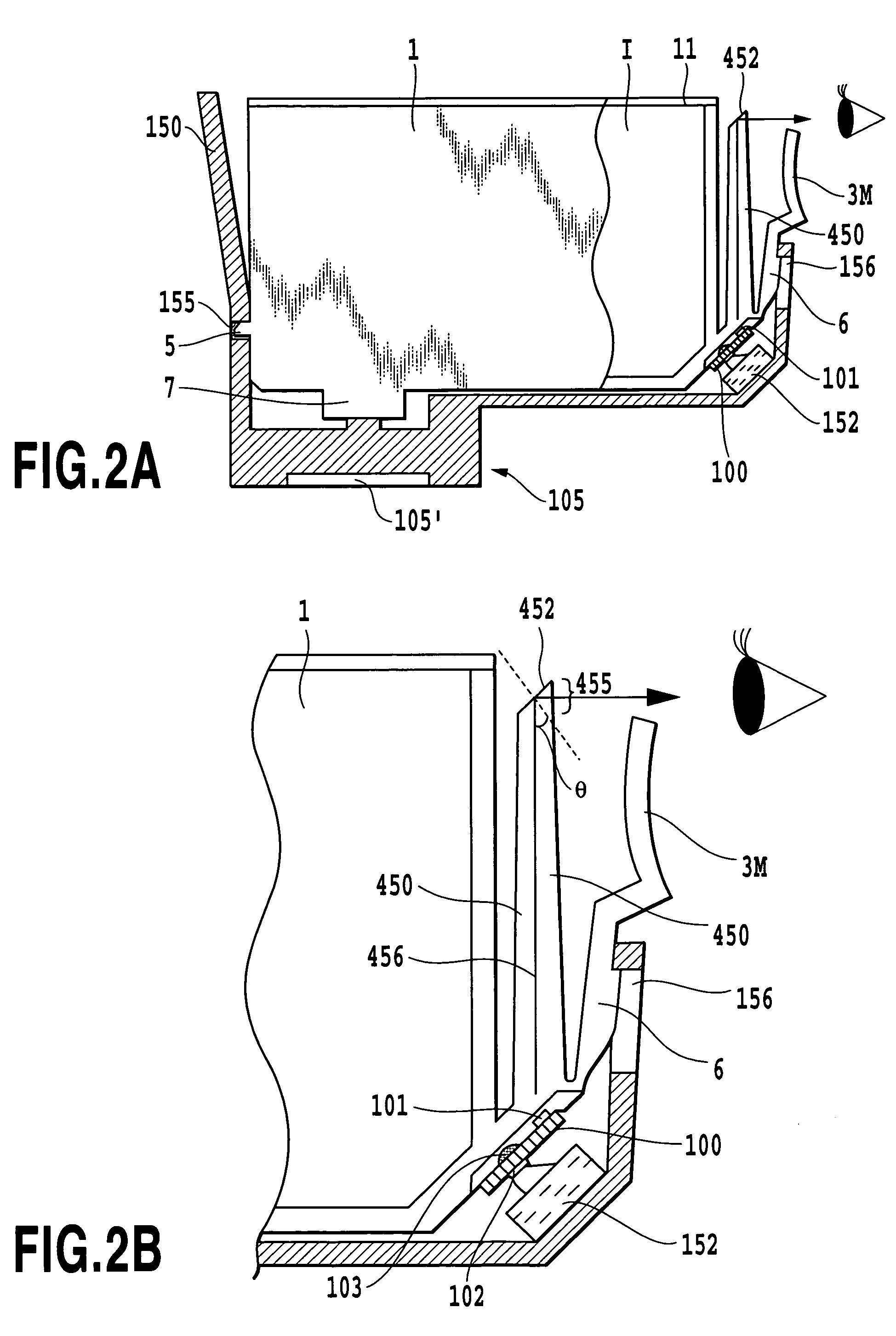Liquid container and ink jet printing apparatus
a liquid container and ink jet technology, applied in the field of liquid containers, can solve the problems of increasing production costs, enlarge the size of the printer, and not always desirable display, so as to improve user visibility, ensure the degree of freedom, and facilitate the effect of light volum
- Summary
- Abstract
- Description
- Claims
- Application Information
AI Technical Summary
Benefits of technology
Problems solved by technology
Method used
Image
Examples
first embodiment
2. First Embodiment of Characteristic Structure
[0077]The user strongly desires to correctly identify the ink tank from which display section are emitted light. If the light volume emitted therefrom is excessively small, it is difficult to be seen. Contrarily, if excessively large, the erroneous identification is liable to occur between adjacent ink tanks. This is also true to the light receiver section in that it may receive the light not emitted from the ink tank in question but from that adjacent thereto.
[0078]Accordingly, it is desirable to employ such a structure that the light emitted from the display section favorably reach the user and the light receiver section. Such a structure will be described below.
[0079]FIG. 8 is a perspective view of an ink tank employing a characteristic structure of the present invention in addition to the above-mentioned basic structure, FIGS. 9A, 9B, 9C and 9D are a side view, a top view, a bottom view and a front view, respectively, of the ink tan...
second embodiment
3. Second Embodiment of Characteristic Structure
[0096]FIGS. 12A, 12B, 12C and 12D are a side view, a top view, a bottom view and a front view, respectively, of a second embodiment according to the characteristic structure. FIG. 13A is a schematic illustration of a printing apparatus on which are mounted a plurality of ink tanks 1 shown in FIGS. 12A, 12B, 12C and 12D, while selecting a cyan tank 1C, a magenta tank 1M and a yellow tank 1Y as representatives. FIG. 13B illustrates a state in which the light receiver section is opposed to the display section of the ink tank 1M for the magenta ink in the arrangement shown in FIG. 13A. Further, in these drawings, the light guiding section 580 and the display section 585 are exaggeratedly depicted.
[0097]In the first characteristic structure, it is devised to emit the light from an upper part of the light guiding section 580 in which the light emission limiting member 21 is provided to define the display section. Contrarily, according to thi...
PUM
 Login to View More
Login to View More Abstract
Description
Claims
Application Information
 Login to View More
Login to View More - R&D
- Intellectual Property
- Life Sciences
- Materials
- Tech Scout
- Unparalleled Data Quality
- Higher Quality Content
- 60% Fewer Hallucinations
Browse by: Latest US Patents, China's latest patents, Technical Efficacy Thesaurus, Application Domain, Technology Topic, Popular Technical Reports.
© 2025 PatSnap. All rights reserved.Legal|Privacy policy|Modern Slavery Act Transparency Statement|Sitemap|About US| Contact US: help@patsnap.com



